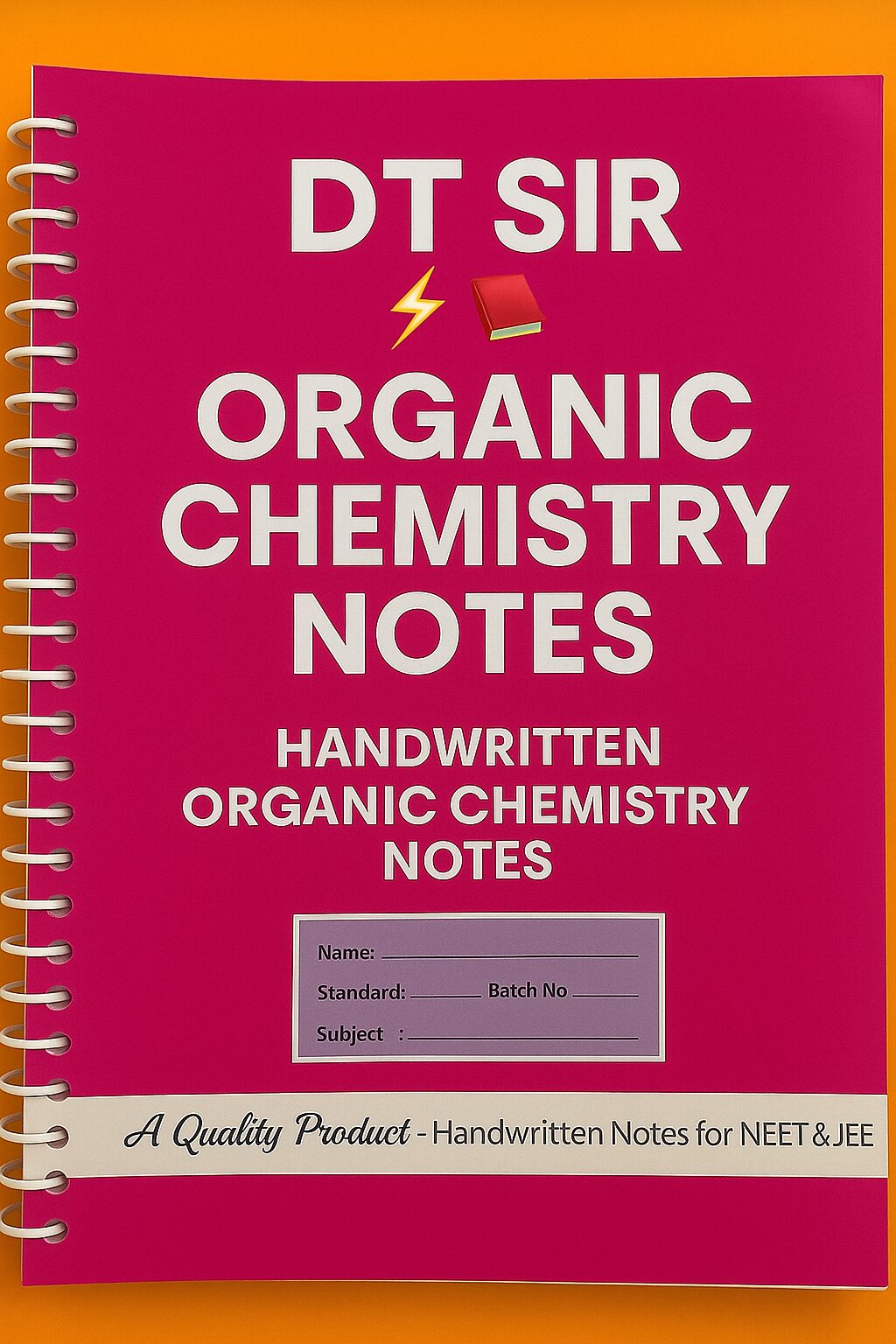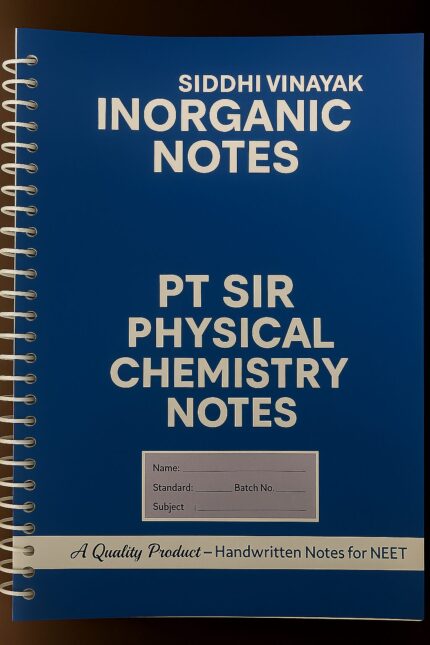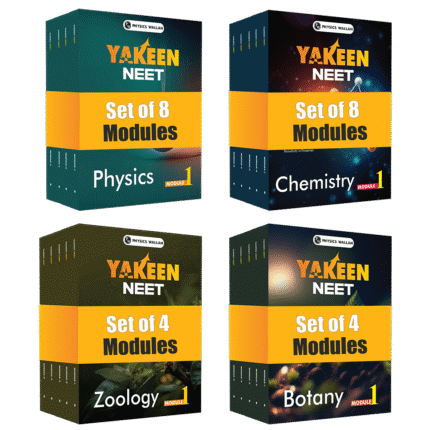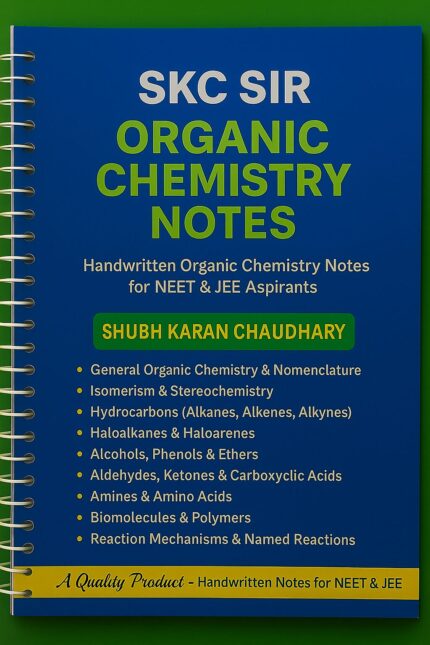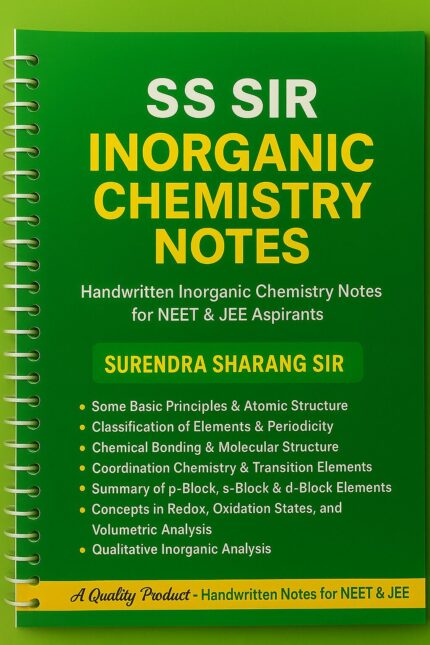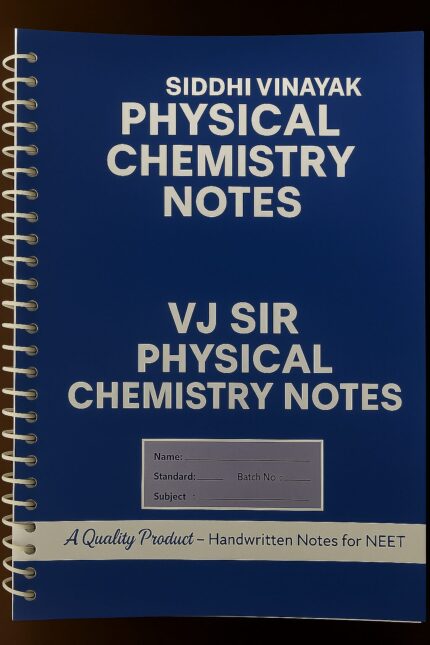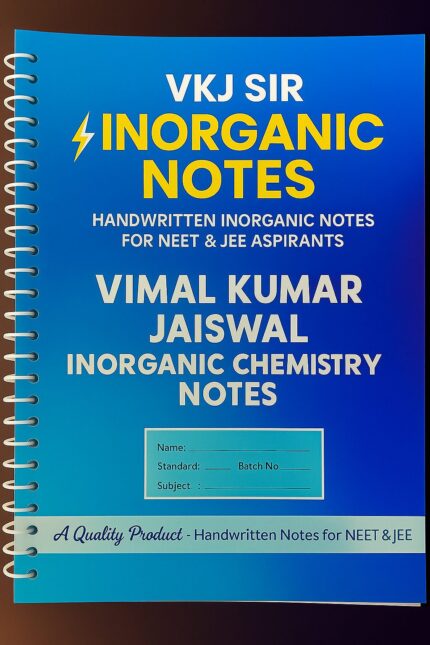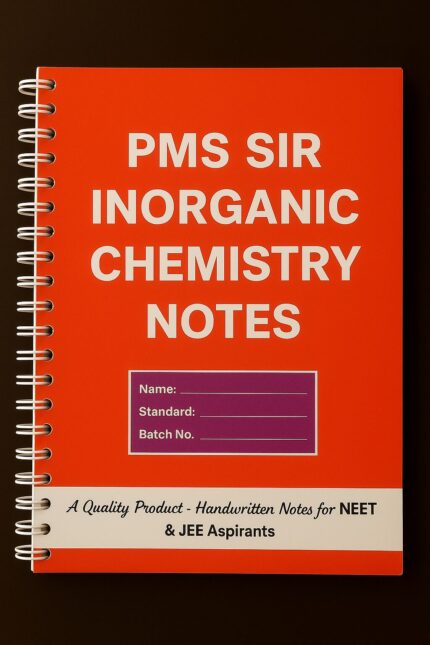

DT SIR ORGANIC CHEMISTRY NOTES
₹1,900.00 Original price was: ₹1,900.00.₹900.00Current price is: ₹900.00.
⭐ DT Sir Organic Chemistry Notes – Handwritten Organic Chemistry Notes for NEET & JEE Aspirants
When it comes to preparing for high-stakes exams like NEET and JEE, many aspirants find Organic Chemistry the trickiest part of the chemistry triad. Reaction mechanisms feel endless, stereochemistry looks like a maze, and exceptions keep piling up. Between juggling IUPAC nomenclature, reaction intermediates, reagents, and named reactions, students often feel they’re memorizing more than understanding.
This is exactly where DT Sir Organic Chemistry Notes step in as a complete game-changer ⚡📘.
These aren’t generic handouts or copied PDFs. DT Sir Organic Chemistry Notes are handwritten with care by DT Sir, a respected Organic Chemistry mentor from Kota’s coaching ecosystem, known for turning dense OC chapters into logical, memorable stories. With crisp explanations, smart mnemonics, reaction maps, and clear diagrams, DT Sir Organic Chemistry Notes are designed to reduce your learning time and boost retention.
Whether you struggle with GOC, get stuck in reaction mechanisms, or freeze at stereochemistry questions, DT Sir Organic Chemistry Notes act as your personal classroom companion—clear, concise, and exam-focused.
Let’s unpack what makes these notes special, why students love them, and how they can transform your NEET & JEE preparation.
📘 What Exactly Are DT Sir Organic Chemistry Notes?
DT Sir Organic Chemistry Notes are authentic, class-style handwritten notes that capture the way DT Sir teaches live. Unlike printed guides, these notes keep the teaching flow intact—definitions where you need them, shortcut tables, mechanism arrows, exception boxes, and color-coded cues that make complex theory stick.
They cover the entire NEET & JEE Organic Chemistry syllabus in a structured, chapter-wise flow, including:
-
General Organic Chemistry (GOC) – electronic effects (inductive, mesomeric, hyperconjugation), acid-base strength, resonance, aromaticity, reaction intermediates (carbocations, carbanions, free radicals, carbenes).
-
IUPAC Nomenclature – priority order, functional group naming, ring systems, and common pitfalls.
-
Isomerism & Stereochemistry – structural vs. stereoisomerism, R/S, E/Z, optical activity, chiral centers, meso compounds, and conformations (Newman/Fischer/Haworth).
-
Hydrocarbons – alkanes, alkenes, alkynes; stability, addition/elimination, and oxidation/reduction patterns.
-
Haloalkanes & Haloarenes – SN1/SN2/E1/E2 roadmaps, reactivity orders, and solvent effects.
-
Alcohols, Phenols & Ethers – preparation, reactivity (esterification, Williamson synthesis), and selective reagents.
-
Aldehydes & Ketones – nucleophilic addition, Clemmensen/Wolff–Kishner, Aldol/Claisen, and tests (2,4-DNP, Tollens, Fehling’s).
-
Carboxylic Acids & Derivatives – acid chloride/amide/ester interconversions, acidity trends.
-
Amines – basicity order, diazotization, coupling reactions, Hinsberg separation.
-
Biomolecules – carbohydrates, amino acids, peptides, lipids; quick recognition and reactions.
-
Polymers – addition/condensation, monomer identification, uses.
-
Named Reactions & Reagent Compendium – Friedel–Crafts, Cannizzaro, Sandmeyer, Reimer–Tiemann, Kolbe, HVZ, Gattermann, Rosenmund, Meerwein–Ponndorf–Verley, and more—each with mechanism snapshots and “watch-outs.”
In short, DT Sir Organic Chemistry Notes give you the full Organic syllabus the way a top teacher would want you to revise it—fast, precise, and crystal clear.
That’s why many students call them “the backbone of Organic Chemistry preparation.” ✨
🏆 Why Choose DT Sir Organic Chemistry Notes?
Let’s be honest—Organic Chemistry can feel like a memory marathon. But scoring high doesn’t mean memorizing everything; it means understanding trends and recognizing patterns. DT Sir Organic Chemistry Notes do exactly that.
Here’s why thousands of aspirants rely on them:
✅ 1) 100% Authentic & Reliable
Directly handwritten by DT Sir—not compiled from random internet sources. You get what he teaches, the way he teaches it.
✅ 2) Exam-Oriented Approach
Concepts, reactions, and mechanisms are explained as per NEET & JEE demand—with emphasis on high-frequency questions, key exceptions, and scoring ideas.
✅ 3) Logical Chapter Flow
From GOC foundations to advanced reaction design, the notes follow a build-up sequence so you don’t get lost.
✅ 4) Revision-Ready Format
Formula boxes, reaction maps, reagent tables, and mnemonics make last-minute revision super efficient.
✅ 5) Trusted by Aspirants Nationwide
Year after year, lakhs of students sit for NEET & JEE; DT Sir Organic Chemistry Notes are widely searched, shared, and recommended in study groups for their clarity.
✅ 6) Clarity in Tough Topics ✍️
Stereochemistry, rearrangements, reactive intermediates, and name reactions are simplified with step-by-step mechanism panels.
📊 Student Popularity & Data Insight
Every year, millions of Indian students prepare for competitive exams where Organic Chemistry is a high-yield section:
-
NEET has seen well over two million (20+ lakh) registrations in recent sessions.
-
JEE Main typically records over one million (10+ lakh) aspirants annually.
That’s a staggering audience where clear, compact, and exam-aligned notes offer a crucial edge. Within this ecosystem, DT Sir Organic Chemistry Notes have become a recognizable term among aspirants who want handwritten, classroom-style guidance that cuts through clutter and focuses on what gets asked.
Put simply: if you’re serious about scoring in OC, DT Sir Organic Chemistry Notes help convert effort into marks faster.
📚 Chapter-Wise Highlights in DT Sir Organic Chemistry Notes
Below is a peek into how the notes transform chapters from “complex” to “clicks instantly.”
1) General Organic Chemistry (GOC)
-
Acid–base strength: precise orders with reasons (inductive/mesomeric/HSAB).
-
Resonance: canonical structures with stability tips.
-
Hyperconjugation & Aromaticity: ring current tricks, Huckel’s rule explained cleanly.
-
Reactive Intermediates: stability ladders for carbocations/radicals/carbanions; rearrangements that matter.
2) IUPAC Nomenclature
-
Priority tables and step-by-step naming templates.
-
Ring systems, prefixes/suffixes, and catching typical exam traps—all in a single glance.
3) Isomerism & Stereochemistry
-
R/S and E/Z determination with flowcharts.
-
Conformation analysis (Newman/Fischer): minimal memory, maximum logic.
-
Optical activity, meso, enantiomers, diastereomers explained with clean sketches.
4) Hydrocarbons
-
Stability trends, Markovnikov vs. anti-Markovnikov routes, peroxide effect.
-
Oxidation and ozonolysis snapshots, special cases highlighted in exception boxes.
5) Haloalkanes & Haloarenes
-
SN1 vs. SN2 vs. E1 vs. E2—decision tree style: substrate, base, solvent, temperature.
-
Benzylic/allylic reactivity sketches and carbocation rearrangement notes.
6) Alcohols, Phenols & Ethers
-
Quick tables: preparation and conversion routes.
-
Phenol reactions (Kolbe, Reimer–Tiemann) drawn mechanism-first.
-
Williamson synthesis variants and exam-worthy exceptions.
7) Aldehydes & Ketones
-
Nucleophilic addition master page: cyanohydrin, bisulfite, imine/enamine.
-
Aldol, Cannizzaro, Clemmensen, Wolff–Kishner side-by-side with “when to use which” hints.
-
Identification tests (Tollens, Fehling’s, 2,4-DNP) summarized with color codes.
8) Carboxylic Acids & Derivatives
-
Acidity order and substituent effects.
-
Interconversions among acid chloride/anhydride/ester/amide with reagents and conditions.
9) Amines
-
Basicity order in aqueous vs. gas phase, Hofmann vs. Gabriel synthesis, Hinsberg separation.
-
Diazotization and coupling—practical, color-coded results to memorize faster.
10) Biomolecules
-
Carbohydrates: ring opening/closing, reducing vs. non-reducing sugars.
-
Amino acids: zwitterion concept, isoelectric point, peptide formation.
-
DNA/RNA basics for NEET-style one-liners.
11) Polymers
-
Name → Monomer mapping, addition vs. condensation, everyday examples—perfect for last-minute recall.
12) Named Reactions & Reagents
-
A single, high-yield section featuring:
Friedel–Crafts, Kolbe, Reimer–Tiemann, Sandmeyer, Gattermann, Rosenmund, Cannizzaro, Aldol, Perkin, HVZ, Beckmann, Wurtz/Fittig, Birch Reduction, Clemmensen vs. Wolff–Kishner—each with tiny, step-wise mechanism tabs, success conditions, and pitfalls.
Every page feels like a “ready-to-revise” board—DT Sir Organic Chemistry Notes make momentum natural and revision stress-free.
🌟 Benefits of Using DT Sir Organic Chemistry Notes
Save Time ⏳ – No need to build notes from scratch; everything is organised and concise.
Concept Clarity 💡 – Visual-first teaching style translates into easy-to-grasp mechanisms.
Exam-Oriented 🎯 – Focus on high-yield and frequently tested patterns.
High Retention 🧠 – Mnemonics, tables, and color cues aid long-term memory.
Confidence Booster 💪 – Reliable notes reduce anxiety and help you revise faster.
Portable & Practical 📒 – Handwritten layouts mirror real classroom logic, not just theory blocks.
🔑 The DT Sir Organic Chemistry Notes Is Ideal for Anyone Looking to Buy
-
DT Sir Organic Chemistry Notes
-
Organic Chemistry Notes by DT Sir
-
DT Sir OC Handwritten Notes
-
Kota Organic Chemistry Notes
-
NEET Organic Chemistry Notes by DT Sir
-
JEE Organic Chemistry Notes by DT Sir
-
Handwritten OC Notes for NEET & JEE
-
Best Organic Chemistry Notes for NEET
-
Best Organic Chemistry Notes for JEE
-
GOC & Reaction Mechanism Notes
-
Stereochemistry & Isomerism Notes
-
Named Reactions Revision Notes
-
IUPAC Nomenclature Notes for NEET/JEE
-
Aldehydes Ketones Carboxylic Acids Notes
-
Amines & Biomolecules Handwritten Notes
-
Organic Chemistry Formula & Reagent Sheet
-
Kota Coaching Organic Chemistry Notes
-
OC Crash-Revision Notes
-
High-Yield Organic Chemistry Short Notes
This keyword-rich cluster helps your product rank across all relevant search queries while keeping the page natural and human-readable. 🌍
🙋 Frequently Asked Questions (FAQ) About DT Sir Organic Chemistry Notes
Q1. What makes DT Sir Organic Chemistry Notes different from regular books?
👉 They’re handwritten directly by DT Sir, capturing classroom logic, precise mechanisms, and exam-ready cues instead of lengthy, unfocused theory.
Q2. Are these notes sufficient for NEET & JEE Organic Chemistry?
👉 Yes ✅. DT Sir Organic Chemistry Notes cover the full OC syllabus required for NEET & JEE. For best results, combine them with NCERT and regular PYQ/mocks.
Q3. Are they beginner-friendly?
👉 Absolutely. The sequence begins with GOC and nomenclature before moving into tougher themes, so new learners build confidence fast.
Q4. Do they follow the latest exam pattern?
👉 Yes. The structure mirrors current NEET & JEE trends, emphasizing high-weight topics and common question patterns.
Q5. Are these notes printed or handwritten?
👉 100% authentic handwritten notes—you get DT Sir’s own flow, diagrams, and highlight style.
Q6. Can I use them for last-minute revision?
👉 Perfectly so 🙌. Reaction maps, reagent tables, and summary boxes make fast revision simple and effective.
Q7. Do the notes include named reactions and reagent tricks?
👉 Yes. A dedicated section lists named reactions and reagent behaviors with short mechanisms and use-cases.
Q8. Will these notes help with problem-solving speed?
👉 Yes. By consolidating mechanism logic and shortcuts, DT Sir Organic Chemistry Notes reduce trial-and-error and help you select the right approach quickly.
Q9. Are diagrams and stereochemistry covered with clarity?
👉 Definitely. Stereochemical representations (R/S, E/Z, Fischer/Newman**) are shown via step-wise visual guides.
Q10. How should I integrate these notes into my routine?
👉 Follow a 3-step loop:
-
Learn a chapter with DT Sir Organic Chemistry Notes;
-
Solve NCERT examples & PYQs;
-
Revisit the summary boxes a day later and again in the week.
🌈 Student Experiences
Students often share how DT Sir Organic Chemistry Notes changed their prep:
“GOC finally clicked. The order of effects and acidity/basicity logic removed my guesswork.”
“Mechanism panels saved me—now I can spot SN1/SN2/E1/E2 in seconds.”
“Stereochemistry was my fear zone. After these visual steps, R/S and E/Z don’t scare me anymore.”
“I stopped rewriting notes. These pages became my one-stop OC manual before mocks.”
🧭 How to Get the Most from DT Sir Organic Chemistry Notes (Mini Strategy)
-
Lay the Foundation – Spend quality time on GOC. Understand effects, stability, and intermediates well—everything else becomes easier.
-
Mechanism First – For new reactions, read the mechanism map once before memorizing conditions. Logic beats rote.
-
Reagent Deck – Keep the reagent summary pages pinned. Revisit them thrice a week.
-
Drill PYQs – After finishing a chapter, attempt past questions immediately. Then, re-read the exceptions boxes.
-
Compact Revision – In the last 2–3 weeks, cycle through Named Reactions + Reagents + Stereochemistry using only the DT Sir Organic Chemistry Notes. You’ll be amazed at the recall.
🎯 Professional Closing
The DT Sir Organic Chemistry Notes are not just pages of information—they’re a complete learning system built on clarity, structure, and exam intent. Handwritten by a respected Kota mentor, these notes deliver what toppers value most: clean logic, quick recall, and scoring focus.
If you want Organic Chemistry to feel manageable, predictable, and high-scoring, choose DT Sir Organic Chemistry Notes. They’ll help you study smarter, revise faster, and walk into the exam with confidence. 🌱📘✨


MAECENAS IACULIS
Vestibulum curae torquent diam diam commodo parturient penatibus nunc dui adipiscing convallis bulum parturient suspendisse parturient a.Parturient in parturient scelerisque nibh lectus quam a natoque adipiscing a vestibulum hendrerit et pharetra fames nunc natoque dui.
ADIPISCING CONVALLIS BULUM
- Vestibulum penatibus nunc dui adipiscing convallis bulum parturient suspendisse.
- Abitur parturient praesent lectus quam a natoque adipiscing a vestibulum hendre.
- Diam parturient dictumst parturient scelerisque nibh lectus.
Scelerisque adipiscing bibendum sem vestibulum et in a a a purus lectus faucibus lobortis tincidunt purus lectus nisl class eros.Condimentum a et ullamcorper dictumst mus et tristique elementum nam inceptos hac parturient scelerisque vestibulum amet elit ut volutpat.

